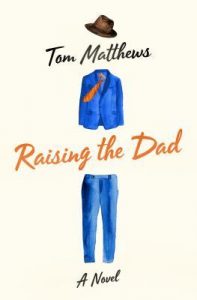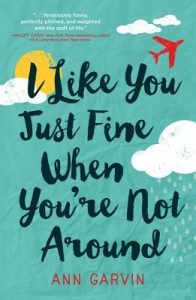
I met Laurie Gardiner in one of the most helpful online writing groups Fiction Writing. She and founder Brian Paone are fair and just administrators of a 30K+ group of supportive and sometimes raucous gang of writers. She published her first novel Tranquility through independent publisher Escargot Books and Music, and short stories in two of the group’s annual “Of Word” themed anthologies. You can find her on Facebook and her own website.
Tell me about your writing style.
“I need silence and a long block of time in order to get into a good writing zone. Some days when the house is quiet I’ll write for hours; other days, life gets in the way, and I don’t write at all. My children are grown, but my house has become the family meeting place, the laundromat, and the neighbourhood diner, so quiet days without interruption are rare. And of course, I wouldn’t have it any other way.
I do all my outlining longhand in a notebook, set up in sections with labeled tab dividers for setting, timeline, each character, etc. I may have a slightly compulsive grammar issue, so I’ve been training myself to stop editing as I go, because I know it’s a habit that slows down my first draft. The first thing I do when I sit down to write is to read over the last few paragraphs I wrote. This helps get my head back into the story before I continue. During this process, I often correct glaring errors or badly structured sentences, but I’m learning to leave the bulk of the editing and revising until the end. I often play scenes out in my head before I sit down to write them. My favourite time to do this is during a walk or a yoga class, or even while I do mindless, everyday chores like laundry and grocery shopping.”
Who gets to read your work first and why?
“My kids are often the first to beta read a short story for me. They are all avid readers and two of them also write as a hobby. They aren’t afraid to be honest and will tell me if they think something doesn’t work. I also exchange critiques with a few fellow writers I’ve met through Fiction Writing, the Facebook group I co-administrate.”
What prompted you to write your book?
“Tranquility was inspired by my work in the dementia unit of a long-term care facility. As a support worker, I spent the majority of my time providing hands-on care to residents. Because my duties were limited to resident care, I interviewed housekeeping and nursing staff in order to gain insight into their experiences and what their jobs entail.
It was also important to me that Tranquility reflect the reality of living and working in a long-term care facility in Canada. The characters represent a variety of ethnicities and I wanted to realistically depict these characters and avoid stereotypes. For instance, one character is an elderly Italian man. A close friend of mine, whose parents came to Canada from Italy, agreed to check the character’s dialogue for authenticity.
I didn’t last long working in facilities. Things are slowly changing for the better, but I didn’t enjoy my work there. It bothered me to make the residents do things even if they didn’t want to, for the sake of adhering to a routine. And I didn’t always agree with how facilities were run and how residents were treated. I found my niche working in homecare, where I could connect one-on-one with my clients and spend quality time with them. At times, it can be difficult caring for people who suffer from dementia, but it’s also very rewarding. Many of my clients were the inspiration for characters in Tranquility.”
Tranquility
Sometimes there’s a price to pay for doing the right thing.

Support worker Sarah Scott learns this the hard way when, soon after being transferred to Tranquility’s dementia unit, she uncovers a sinister secret. Doing the right thing could mean losing her job, and unemployment is not an option for the young, single mom.
Meanwhile, Sarah begins to question whether her newest resident, Edie, belongs in the nursing home’s locked unit. The feisty, Scottish woman certainly doesn’t act as though she has dementia. Sarah is determined to have her released, but her plans may be thwarted when Edie risks her own freedom to help uncover the secret.
Tranquility is a poignant story of the relationship between three generations of women as they struggle to reconcile past hurts and discover the healing power of love. It is an eye-opening, behind-the-scenes glimpse into life in a long-term care facility, and a fight for justice in the face of adversity.
Click here to purchase Tranquility on Amazon
Give a timeline for the publishing process.
“Tranquility was published by Escargot Books and Music, an independent publisher out of California. The personal, collaborative publishing experience was exactly what I needed as a first-time author. The whole process of researching how to publish, searching for a publisher, writing a query letter and synopsis, and dealing with rejection, opened up a whole new world of knowledge for me.
As is the case with most independent publishers, the majority of the marketing was left to me. Months before Tranquility’s release, Escargot advised me to build my author platform. I set up a website and a Facebook page, and joined online writing communities where I could connect and network with readers and other writers.
After Tranquility’s release, the publisher set up a virtual blog tour. It was a great opportunity for me to interact with bloggers and readers, and it resulted in some much-needed book reviews.
This past summer, I had the opportunity to sell my books at a neighbourhood farmer’s market when they invited local artists to come and promote their works. I’ve also done book signings and readings at local libraries. Both were a fun way to connect with my neighbours while marketing myself and making sales.
Marketing is something I had no experience with before being published, so it has been a huge learning curve for me. I continue to research and learn more every day.”
How does your creative effort influence your daily life?
“Writing is an outlet and a way of expressing myself. As a mother and a caregiver, I’ve spent the majority of my life caring for others. Writing is the one thing I do that is only for me, and I believe I am a more fulfilled, well-rounded person because of it.
I come from a family full of creative people. My mother was an artist, a writer, a singer, and a musician. She created lush gardens and laid the stone paths that wound through them. Our Christmas gifts were beautifully crafted sweaters and blankets she knit or crocheted. Many of us own one-of-a-kind rustic wood furniture pieces built by my father. They passed that creativity on to their children and grandchildren.
Unfortunately, I have trouble drawing a decent stick figure, power tools scare me, and my singing voice could be a used as a form of torture. I did inherit my father’s athleticism, and I enjoy swimming, kayaking, canoeing, hiking, and yoga.”
You can connect with Laurie on her website, Facebook, and Fiction Writing.
Purchase Tranquility at Amazon and the “Of Words” anthologies containing her stories at Scout Media.
 Single mom Sarah starts day shift in the dementia ward of the healthcare facility Tranquilty, moving from nights in palliative care. Her new co-worker Tracey immediately befriends her, introducing her to the “cast of characters” for whom she will be caring: Sam, who randomly prefers nudity, gentle, inquisitive Rose, the bickering twins Lily and Beth, the wheelchair menace Mrs. W, who remembers a concentration camp more vividly than contemporary events, quiet Mrs. Sellers, Italian immigrant Mrs. Gallo, whose husband visits her daily, Alfred, who has a tendency to call for a once beloved cat named Hairball, and Mrs. Amaral, a sweet Portuguese immigrant. Gardiner’s work in such a facility inspired the story, and to ensure accuracy, her research included interviewing employees in all areas of the facility, from bathing to housekeeping. New residents to Tranquility bring a professional dilemma, a dangerous situation, and potential romance for Sarah. Edie, with her soft Scottish brogue, does not appear to be suffering from dementia, but when she fakes it to expose an abusive employee, Sarah keeps an eye on her. After two violent incidents, endangering staff and residents, John is quickly moved again, to the psych ward. With Georgia comes a big family, including her great-grandson Jay, who lights a fire in Sarah. Along with all this, Sarah’s own grandma suffers a second stroke, and her mother must deal with end of life choices, a struggle for a woman who hasn’t really gotten over her husband’s death a decade earlier. The brightest light in this story is Kayla, Sarah’s daughter, who gives her grandma life, and handles great-grandma’s struggle with surprising grace for a 4-year-old. Sarah and Tracey execute a not-quite-legal plan to prove the co-worker’s abuse, but it’s waylaid by Edie’s plan to do the same. Everything comes together in the end in a complicated, bittersweet resolution, just like in real life. Characters learn and grow, while others astonish, but most of all, the ones who need to find themselves do so.
Single mom Sarah starts day shift in the dementia ward of the healthcare facility Tranquilty, moving from nights in palliative care. Her new co-worker Tracey immediately befriends her, introducing her to the “cast of characters” for whom she will be caring: Sam, who randomly prefers nudity, gentle, inquisitive Rose, the bickering twins Lily and Beth, the wheelchair menace Mrs. W, who remembers a concentration camp more vividly than contemporary events, quiet Mrs. Sellers, Italian immigrant Mrs. Gallo, whose husband visits her daily, Alfred, who has a tendency to call for a once beloved cat named Hairball, and Mrs. Amaral, a sweet Portuguese immigrant. Gardiner’s work in such a facility inspired the story, and to ensure accuracy, her research included interviewing employees in all areas of the facility, from bathing to housekeeping. New residents to Tranquility bring a professional dilemma, a dangerous situation, and potential romance for Sarah. Edie, with her soft Scottish brogue, does not appear to be suffering from dementia, but when she fakes it to expose an abusive employee, Sarah keeps an eye on her. After two violent incidents, endangering staff and residents, John is quickly moved again, to the psych ward. With Georgia comes a big family, including her great-grandson Jay, who lights a fire in Sarah. Along with all this, Sarah’s own grandma suffers a second stroke, and her mother must deal with end of life choices, a struggle for a woman who hasn’t really gotten over her husband’s death a decade earlier. The brightest light in this story is Kayla, Sarah’s daughter, who gives her grandma life, and handles great-grandma’s struggle with surprising grace for a 4-year-old. Sarah and Tracey execute a not-quite-legal plan to prove the co-worker’s abuse, but it’s waylaid by Edie’s plan to do the same. Everything comes together in the end in a complicated, bittersweet resolution, just like in real life. Characters learn and grow, while others astonish, but most of all, the ones who need to find themselves do so.
 John Husted picks up his brother from prison with his mother, whose dementia charms her into thinking he’s coming home from vacation. The good son, John cared for his mom after his dad died, is now building his own family, continuing to monitor his mom in her home, and settles his ex-convict brother in with mom. It’s no surprise then that his father’s colleague, succumbing to a terminal illness, turns over his clandestine responsibility to John, who now must make a final, impossible decision.
John Husted picks up his brother from prison with his mother, whose dementia charms her into thinking he’s coming home from vacation. The good son, John cared for his mom after his dad died, is now building his own family, continuing to monitor his mom in her home, and settles his ex-convict brother in with mom. It’s no surprise then that his father’s colleague, succumbing to a terminal illness, turns over his clandestine responsibility to John, who now must make a final, impossible decision. Tig Monahan just put her mother into a home, lost a boyfriend to Hawaii, and gained a newborn from a runaway sister. After leaving her job for the boyfriend who leaves her, Tig falls into the position of radio psychology host, where she blossoms, but also learns a harsh lesson about the limitations of radio. She must find herself to put her life back in order, and let go of trying to control everything and everyone. When she finally opens up, her family relations, romance, and friendships fuel her rather than burden her.
Tig Monahan just put her mother into a home, lost a boyfriend to Hawaii, and gained a newborn from a runaway sister. After leaving her job for the boyfriend who leaves her, Tig falls into the position of radio psychology host, where she blossoms, but also learns a harsh lesson about the limitations of radio. She must find herself to put her life back in order, and let go of trying to control everything and everyone. When she finally opens up, her family relations, romance, and friendships fuel her rather than burden her.